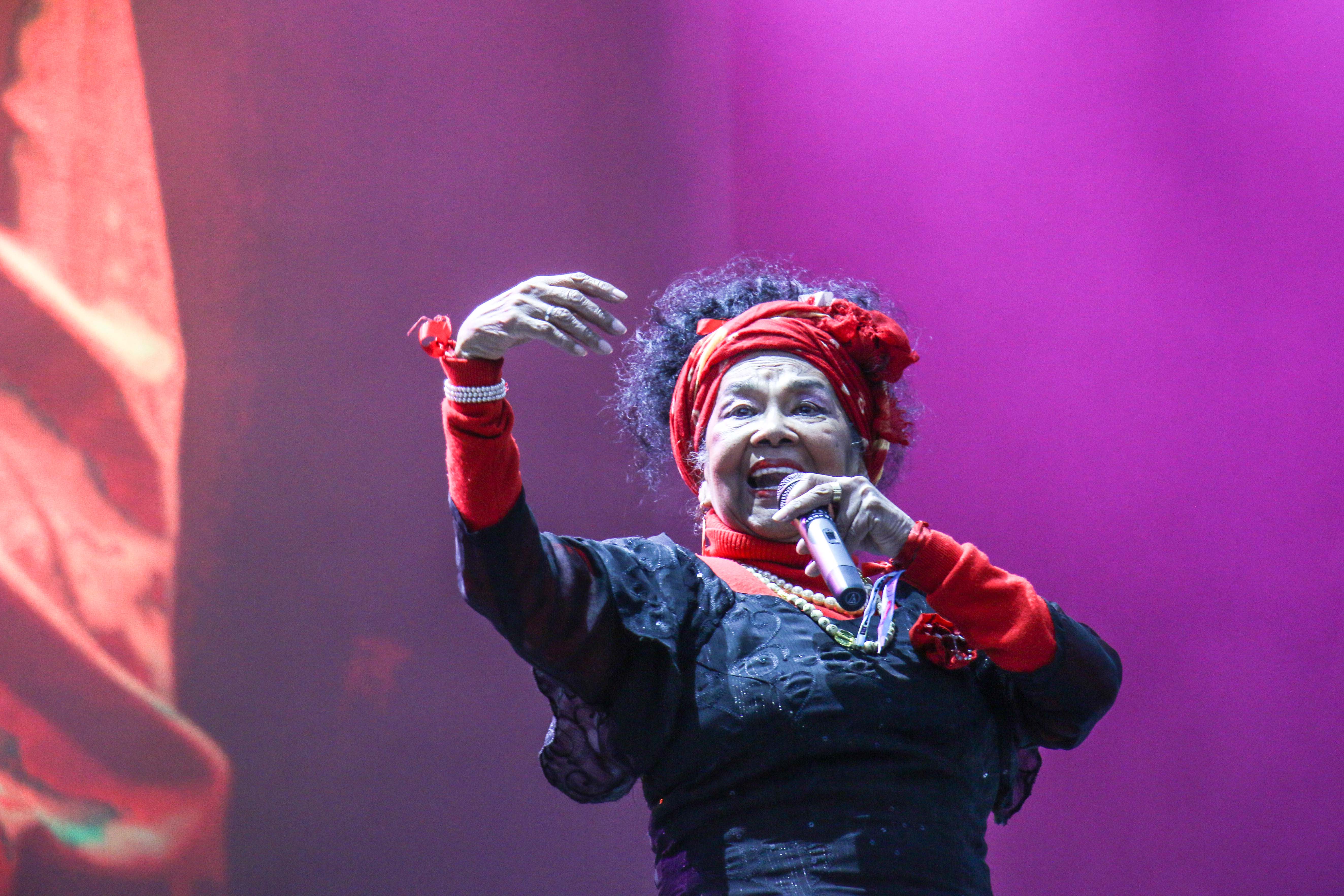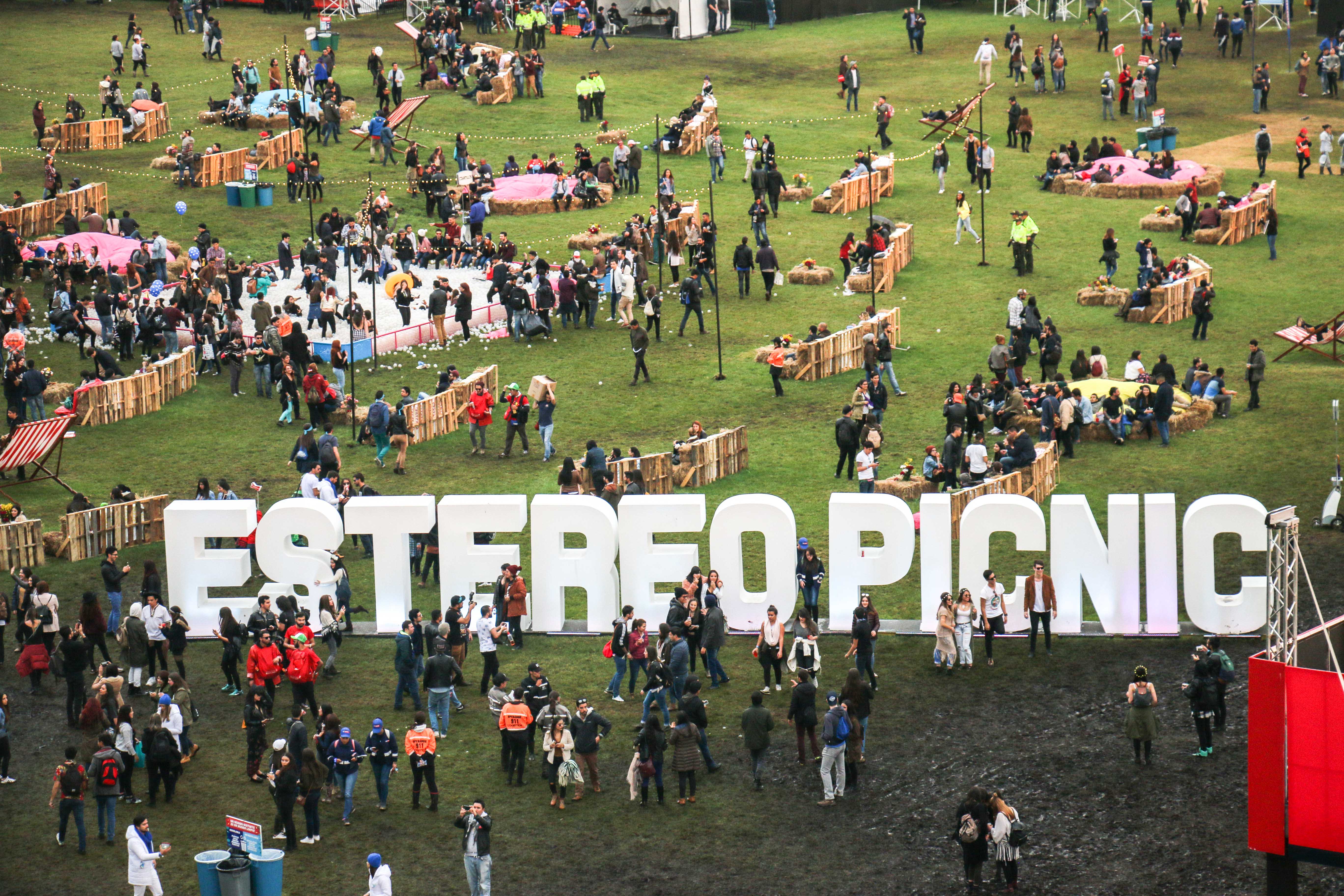At the eighth edition of Bogotá’s Festival Estéreo Picnic, Afro-Colombian icon Totó La Momposina is singing the cumbia classic “Aguacero de Mayo,” as rain showers the sprawling audience for the third straight day. With spirits high despite the downpour, the crowd struts and sways in the mud, as Totó’s vocals and coastal rhythms wash over the crowd.
An estimated 100,000 fans from all corners of Colombia and the world ventured to the idyllic green outskirts of the city this past weekend to catch international headliners such as The xx, The Weeknd, and The Strokes, as well as local performers of all genres. Estéreo Picnic was The Weekend and The Strokes’ first performance in Colombia, once again pointing to the event’s ability to attract major international bands to a previously overlooked region in the global festival landscape.

Founded in 2010, Estéreo Picnic has distinguished itself as one of Colombia’s top music festivals, thanks to its diverse and forward-thinking lineups. As the festival continues to grow in popularity, Estéreo Picnic remains one of the few spaces where mainstream artists like Wiz Khalifa can coexist on the same stage as Totó and Canalón de Timbiquí, national staples of música folclórica and Afro-Colombian traditions. This curatorial vision has also allowed Estéreo Picnic to stand out among massive Latin American peers like Lollapalooza Chile, Brazil, and Argentina, as well as Mexico’s Vive Latino.
“From the beginning, what made the festival strong is that we wanted to create our own identity,” says Eugenio Chahin, an Estéreo Picnic media manager and organizer who has been with the festival since 2011. “The idea of the festival was to build a scene with our own musicians, and that has been a rule for all our editions.”
Since its inaugural edition, Estéreo Picnic has stayed close to its roots, drawing from the country’s vast musical and cultural history. In 2010, six out of eight acts were Colombian. While international bands and singers like The Strokes and The Weeknd now headline the festival, Estéreo Picnic stays committed to booking homegrown talent.

According to festival organizer Miguel Santacoloma explains, booking Totó was a priority. As an homage to the woman who carved a space for many of the nation’s most important singers, producers, and artists, the organizers shaped Saturday’s lineup by selecting Colombian talent following in her footsteps.
“Colombian music is having a revolution, and Estéreo Picnic knows how to showcase that.”
Beyond the established acts, the festival also includes promising emerging talent from Colombia’s booming music universe. Chahin points to musicians who graced the stages of the festival early on, and later developed international careers, like Systema Solar, Monsieur Periné, and Bomba Estéreo. In 2015, the Pacific coast hip-hop group ChocQuibTown won their first Latin Grammy, four years after their Estéreo Picnic performance. According to Santacoloma, the festival creates a platform for audiences to catch huge international acts, but also to strengthen the national music industry by fostering Colombian artistry.
“Obviously we have similarities with Coachella and Lollapalooza, but for us, it’s not only important to have international artists play, but also for our homegrown bands to be noticed by those artists, international media, and local audiences,” Santacoloma told Remezcla.
Considering the uncertain future of Lollapalooza Colombia, which was canceled in 2016 after Rihanna dropped out of the lineup, Estéreo Picnic and Rock al Parque wield a singular power to propel national acts to a global level. But in contrast to Rock al Parque, Estéreo Picnic is not tied to one genre.

This year’s crowd favorites included electro tropical duo Cero39, Bogotá rapper Ali AKA Mind, who celebrated mestizo pride and repped his hometown, bubbly indie rock band Arbol de Ojos, and Cali-based hip-hop crew Zalama Crew. “We are a musical country with many musical genres,” Chahin said. “We don’t want to say the Colombian lineup is only folkloric. We also have rock, pop, punk rock, blues, electronic, hip-hop.”
“From the beginning, what made the festival strong is that we wanted to create our own identity.”
As the festival expands its curation to include genres like hip-hop, organizers remain committed to including local bands. “We’re always looking for new flavors to add to this mix, but those flavors have to have something from Colombia,” Santacoloma said.
Cero39 is one of the groups looking to reimagine Colombia’s musical traditions. Dario Sendoya, one half of the duo, told Remezcla they refer to their music as “dembow clash” (the truth is their music hops across so many genres that a single label would do them a disservice). Their performance, and Estéreo Picnic at large, speaks to the intersections of musical and cultural diversity characteristic of this generation of Colombian artists and fans.
“We saw an audience that is open to everything: from dancing champeta to cumbia,” Sendoya said of their Saturday night performance. “It’s a dream for us to have an audience that has an open mind to our various musical landscapes.” Indie rockers and reggaetoneros alike came out for their set, and a pair of cool kids shouted “Que chimba!” (Bogotá slang for “how awesome!”) to each other as they watched the band perform.

Of course, Estéreo Picnic plays a role expanding local taste, but as Chahin explained, the effort doesn’t start or end with the festival. Some of the organizers are also behind the indie showcases of Hermoso Ruido and new festivals in Lima, Peru. These festivals’ commitment to put on local bands, along with airplay and placement from media outlets, have given the Colombian music industry some of the support it needed to flourish over the last 10 years. “The bands that caught our attention this year aren’t necessarily the headliners, but the Colombian bands at the festival,” said Alvaro Gonzalez, director of Colombia’s national public radio station Radionica. “Colombian music is having a revolution, and Estéreo Picnic knows how to showcase that.”
“Estéreo Picnic shows that in Colombia we can believe in our own artists.”
As Sendoya of Cero39 puts it, “Estéreo Picnic shows that in Colombia we can believe in our own artists and put them on the same stage as other international artists. It’s a positive message about our national identity.” The sentiment resonates in neighboring countries that are on a mission to cultivate their own music industries, but for the foreseeable future, Estéreo Picnic remains the go-to event of the region. Ecuadorians, Venezuelans, Peruvians, Costa Ricans — many of whom had never attended a festival before – showed up in droves. “We just don’t have this caliber of festivals in Ecuador,” said one festivalgoer who flew in from Guayaquil with his friends.
Bogotá has quickly become a music hub for international artists, and Estéreo Picnic confirms there’s enough of an appetite and audience for other Latin American and international bands to make Colombia a necessary stop on tours. “We are a market that is growing and we want more festivals to come to the country,” Chahin concluded. “We have a huge crowd nowadays that was unimaginable 10 years ago, but there’s still a lot of work to do.”







